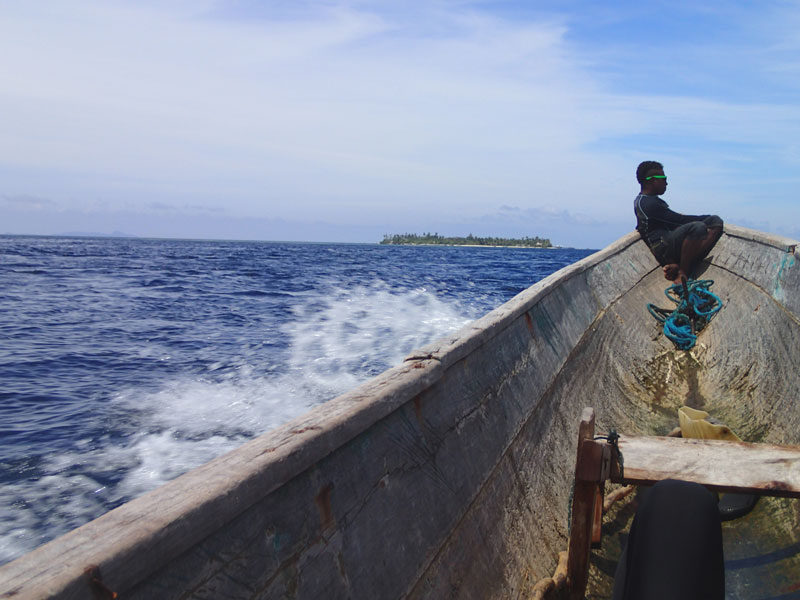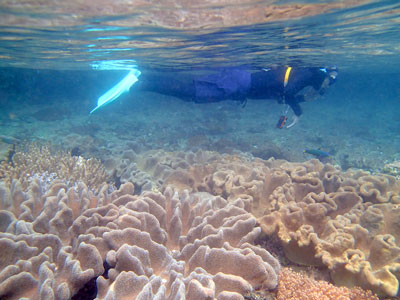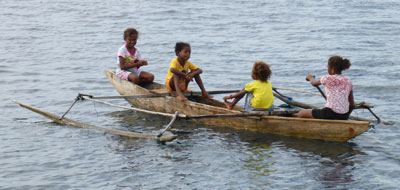Enjoying village accommodations and spectacular underwater sights on a trip to Indonesia’s Raja Ampat islands
This article appears on page 32 of the September 2015 issue.
In my extensive travels, my goal is always to find unique cultural experiences. When planning my January 2015 trip to Indonesia, I discovered just such an experience: the opportunity to stay in a traditional Papuan island village. Such a stay would offer accommodations in private bungalows and the chance to interact with locals, view exotic wildlife and swim over the most diverse coral reefs in the world.
Some of my family members, ages 42 to 70, were enthusiastic, so we chose three villages to visit and headed to Raja Ampat, a collection of remote South Pacific islands located in Indonesia’s West Papua province, between Australia and the Philippines.
These islands are governed by Indonesia, but their indigenous people are Papuans, a very distinct and culturally interesting group.
Getting there
Reaching the islands where the Papuan villages were located was an adventure in itself. We began by flying to Indonesia via the cities of Jakarta and Makassar. From there, we flew to Sorong, West Papua, a waterfront town bustling with tuk-tuks and about 220,000 people.
We chose a taxi for the 10-minute ride to the harbor, where we boarded a twice-daily ferry to the island of Waigeo. The 2-hour ferry ride was very civilized, despite our not speaking the local language and the crowded conditions on board. Our seats were reserved, and snacks were available for purchase.
Because the islands of Raja Ampat are located in the most diverse marine habitat on Earth, a $100-per-person marine-park fee is collected. These fees are necessary to protect this precious resource.
After we paid the park fee on the dock at Waigeo, we needed to connect with someone from our first village. However, we didn’t have the person’s name, so we called out the village name, feeling much like lost lambs calling for their mom.
Eddie, the bungalow owner, answered our calls and, with his limited English vocabulary, welcomed us warmly. He led us to a long, wooden canoe, called a longboat, that was twice as long as a normal canoe.
We sat on the bottom of the boat, gliding for two hours through tranquil waters to Mansuar Island and to our first accommodation, Koryau Kayem. As we arrived, the setting sun was painting our soon-to-be home a brilliant orange, and we knew this was going to be an amazing experience.
Island accommodations
The three bungalows were all built on poles and extended out over the water ($46 per couple per night). Each consisted of two bedrooms and a common porch that faced the open sea. Our group was made up of two couples, and this was a perfect arrangement for us.
Each bedroom had a mattress on the floor draped with mosquito netting. The porch had chairs and a table where typical Papuan food was served three times a day. Two hammocks were also supplied, providing the best relaxation we’d had in a long time.
During our stay, we waded to a nearby thicket of mangrove roots, where we counted 11 walking sharks. These small, brown-and-black epaulette sharks “walk” rather than swim, wriggling their bodies and pushing themselves across the sand with their paired fins. It is the fish that everyone hopes to see while visiting these islands, and we were thrilled with our discovery.
We also swam in the warm, clear water over incredible coral reefs and took early-morning strolls, spotting interesting birds, including cockatoos, lorikeets and sea eagles.
When we walked to the nearby village of Yenbuba, located about 10 minutes away, we were greeted by friendly adults working on their boats as well as by curious children wanting to make contact. Life in and out of the water was extraordinary.
One day we circumnavigated the islands of Kri and Mansuar. Our guide knew where the good birds, coral and fish were and stopped often for us to take a look.
Once we tried to land the longboat for a picnic on a beach, but the abundance of coral prevented us from reaching the shore. Imagine!
On to Indip
On the fourth day we transferred by longboat to our next lodging, Indip, on Arborek Island. We had rented two cabins ($27 per person per night) farther back on the beach, each with its own bedroom and front porch. A separate, covered dining pavilion was situated closer to the shore, and lounge chairs were available for comfortable relaxation.
Traditional meals were served by the owner’s two adolescent daughters, who were keen to get to know us. Through hand signals and a little English, we learned that the owner’s family lived next door.
Unlike our first lodging, our cabins in Indip were located right next to the village, and we enjoyed feeling like we were a part of the life there. We walked through the village and exchanged friendly greetings with the locals. Discovering a tiny food shop, we bought cold Cokes, which were a real treat.
I walked around the entire island in 30 minutes and enjoyed photographing the timber houses and the boats pulled onto dry land.
The next morning we boated to a spot where 11 manta rays were feeding at the surface. We all jumped into the water.
The only indication that the mantas were aware of us came when they dove under us at the last minute to avoid colliding with anyone. It was a thrilling experience.
In the afternoon we set out in our trusty longboat to the island of Gam to see one of the most exotic birds in the world, the king bird-of-paradise. After a hot trek uphill, we spotted three large birds, their red plumage brilliant in the late-afternoon sun. On the way back, we added a blue kingfisher and a large crow to our list of avian species spotted.
Final stop, Famangkor
Our last accommodation, Famangkor, was on the island of Friwen. As this island was closer to the Waigeo harbor than the others on which we’d stayed, it was a wise last stop. We were the only occupants in the bungalows ($27 per person), which was also the case at the first two places we’d stayed.
Friwen village was on the opposite side of the island from the bungalows, so it felt like we were on our own private island. Only at mealtimes did we see other visitors.
Shy mothers with young babies would come to serve the food, and they seemed to want to show us their children or show us to the kids; I was never quite sure which.
We invited several women to sit with us and asked them to teach us a few words in their language. Between their bits of English and our bits of the Papuan language, we were able to learn about their families and life on the island. This was great fun and very meaningful for all of us.
We spotted more colorful birds and enjoyed two great snorkeling outings during our stay at Famangkor. One excursion took us under the ledge of a huge rock outcropping, where pink and purple soft corals were vibrant and abundant. The second site we visited was so spectacular that we had someone write the name in Papuan in case we decide to return.
Friwen village was more developed than our two previous villages. It had a long pier, a hospital, a church, a marine information station and a small food shop. Flowering bushes and trees lined the dirt walkways.
Our eight days of experiencing the incredible nature on the islands and authentic village life ended too soon.
Back to Sorong
We returned to Waigeo, a 45- minute longboat ride under overcast skies, then boarded the ferry and settled into our reserved seats. Two hours later we arrived in Sorong, where our friend and guide, Ranny, met us and took us to a street market for dinner.
We had roasted corn on the cob and selected a fresh grouper to be grilled. Ranny ordered the now-familiar green veggies and white rice. We ate our mini-feast surrounded by local families enjoying a night out on this perfect cool and breezy evening.
We spent the night in Sorong before our flight home the next day. I have never enjoyed hot water, a flush toilet and white-sheeted beds so much as I did that night, but I also deeply missed the serene beauty and friendly hospitality that we had enjoyed on the islands of Raja Ampat.
The details
Village bungalow rentals provide a sustainable income for the community and contribute money for the preservation of the rich marine ecosystems. An excellent website (www.stayrajaampat.com) supports this effort, providing information about getting there, island guides and birding and other activities as well as details, photos and prices of accommodations in 32 village communities.
Through this website we met Ranny (click “The Ultimate Raja Ampat Guide” to find a link to guides), an enthusiastic, caring tour consultant and guide who traveled with us to our first village stay. Since the owners didn’t speak English and we didn’t speak Indonesian, her help was invaluable in making our excursion and village stay arrangements, both before and during our trip.
Our meals were similar in each village. Bananas and delicious fried fritters were served for breakfast. Traditional Papuan meals of white rice and steamed fresh, green vegetables were served for lunch and dinner, sometimes mixed with potatoes and carrots. Although fish was available, our group opted for fried eggs, since we are all vegetarians.
Excursions for birding, snorkeling and island hopping were offered for very reasonable prices. For example, a full day of boat excursions cost around $80 for the group. A guide and a boat driver accompanied us on every outing, and, in the water, there was always a guide with us to point out interesting wildlife.




